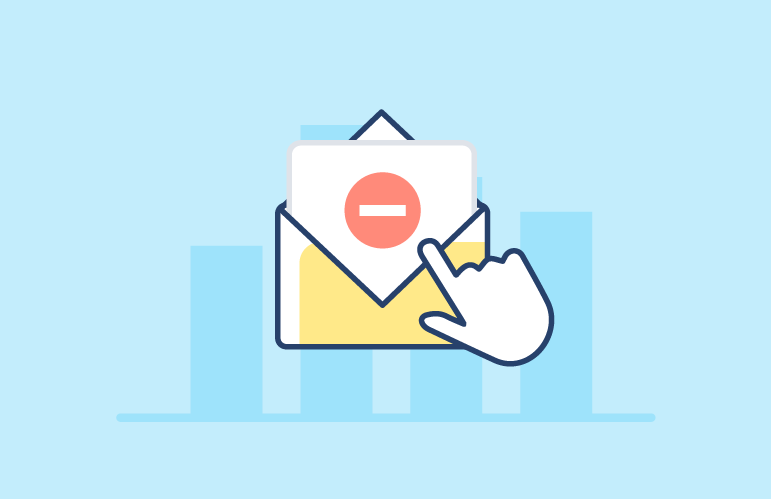Unsubscribe rates: are they really that low?


Catégorie : Email marketing
Marketing is a constant balancing act. On the one hand, you strive to be customer-centric by providing a personalized experience. On the other hand, you need to meet your business goals, such as driving revenue or promoting excess inventory.
An inevitable side effect of any email campaign is that, for a variety of reasons, your customers may decide to opt-out of further communication with your organization.
Unsubscribe rates are commonly used to measure how much a campaign resonates with your customers—for example, if they found it to be helpful and interesting, or if they were interested in the products promoted or if it was sent at a good time. Or on the reverse side—they did not find it to be any of these.
While your unsubscribe rate may seem minuscule, how does that impact your customer base in the long run? Is it as harmless as it is made out to be?
The truth is, unsubscribe rates always seem low. We are talking about fractions of percentages, which can make them seem insignificant. This also makes it hard to compare across campaigns, as you sometimes have to go several digits down—to the hundredths or thousandths of a percentage point—to notice a difference. This lures many marketers into believing that “the fatigue is under control” and “our unsubscribe rates are stable.”
In actuality, we can see from the numbers that even the average 0.1% unsubscribe rate can equal a significant number of customers over the course of a year.
Let’s take a database of 2 million opt-in users as an example, running 4 campaigns per week. If a full-base campaign drives 0.1% unsubscribes out of this 2M list, that’s 2,000 customers who will no longer receive emails as a result of that one campaign. In a later blog post of this series, we will go into what this means in terms of revenue, and how this compares to acquisition efforts.
Even with just numbers as an example, you can see that after only 3 months, and 4 weekly campaigns, you will have lost 7 percent of your customer base—more than 130k customers! In a future blog post, we will examine these numbers in detail and attribute revenue, to drive the point home even further.
With the same data as above shown in a graph, you can easily visualize the steep trajectory of your unsubscribe rate over the year, with over a quarter of your customer base gone at the end of 12 months. Although your unsubscribe rate may seem small on an individual campaign a month-to-month basis, it can climb and add up much faster than you may realize.
Reflection is the first step in changing how you view your metrics! To this end, we’ve created a free, easy-to-use simulator so you can see the real impact of your unsubscribe rate over time. For anyone with a Gmail account, simply make a copy of this Google Sheets and fill in with your own numbers. For others, you can download it as an Excel file.
Questioning your unsubscribe rate is just the beginning! In future blog posts in this series, we will delve into other KPIs you should be tracking to help you better analyze your unsubscribe rate and optimize your campaign performance. And finally, we will explore how to calculate the lifetime value of your customers, and the actual cost of unsubscribed vs. acquired customers.